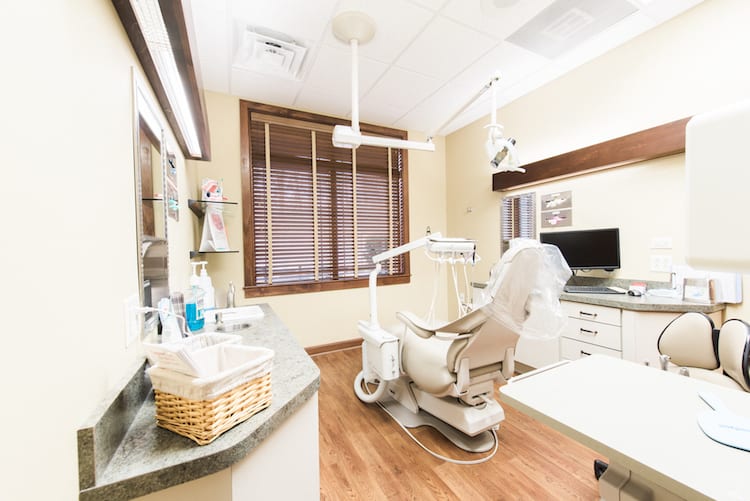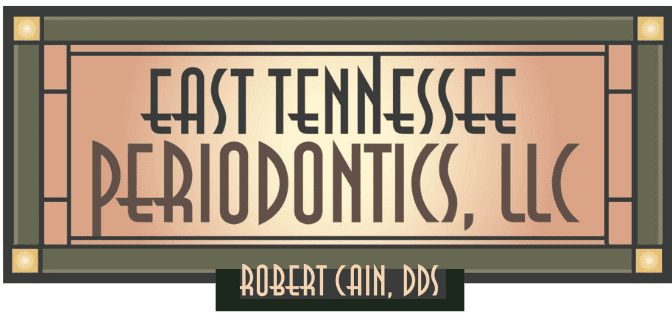Are you looking for a dentist in Knoxville?
Dental health can have a huge impact on the overall quality of life and well-being. This is why it is so important to maintain good oral health and visit your local dentist regularly. Dr. Robert Cain and his team are committed to improving the health and function of patient’s smiles through comprehensive dental care and services.
Of course, your smile should look good – but it should also function well and be comfortable. Our focus is on restorative and cosmetic dentistry, using state-of-the-art technology and the most advanced techniques.

Our Knoxville dentist office provides a full range of periodontics, implant dentistry, and routine dental care services for both common and complex needs. Preventative care visits provide us the ability to detect developing dental problems in the early stages.
Routine visits will include a full oral cleaning, digital dental x-rays, and screenings for gum disease, tooth decay, and oral cancer.
We also offer personalized cosmetic dentistry procedures. Improving the appearance of your natural smile not only increases your self-esteem but also can improve your overall oral health. We can enhance the look of your smile through teeth whitening, dental implants, and other treatments to leave you feeling healthy and confident.
Restorative dental procedures focus on restoring health, aesthetics, and function. Our dentists are able to treat any complex dental need through dental implants, crowns, and dentures. Fix your worn, broken, or missing teeth and improve the quality of your life.
You deserve a healthy, beautiful smile. Take a moment to remind yourself to visit the dentist and how important good oral health is! Schedule your appointment today.
Learn More About Our Dental Services
Cosmetic Dentistry in Knoxville, TN
Our cosmetic dental services include procedures that focus on improving the beauty of your smile. We can combine these with restorative dental services for a complete smile makeover.
General Dentistry in Knoxville, TN
Dr. Cain provides preventative and general dental services to maintain your teeth in good oral health standing. We serve patients of all ages in a friendly dental office in Knoxville.
Restorative Dentistry in Knoxville, TN
Restoration dentistry improves the longevity of your smile. We can replace missing teeth, rid your mouth of gum disease, and more. Improving your long-term dental health is our main priority.
- Dental Bridges
- Dental Crowns
- Dental Implants
- Dentures & Partials
- Tooth Extractions
- Pinhole Gum Lift
- LANAP®
Periodontics in Knoxville, TN
As a trained and experienced periodontist, Dr. Robert Cain offers the range of services necessary to restore and maintain healthy gums. Gum health plays a role in the long-term maintenance of a healthy smile as well as your overall health and well-being. Dr. Cain can treat the signs, symptoms, and stages of gum disease from gingivitis to periodontitis.
Restoring healthy gums will improve both oral and physical health, reducing the risks of complex dental concerns, cardiovascular disease, and systemic disease that can be related to internal inflammation.
Our periodontal services include:
- Periodontal therapy
- Periodontal surgery:
- Gingivectomy
- Tissue regeneration
Cosmetic Gum Treatments
Many patients come to us because they are unhappy with the aesthetic appearance of their smile due to receding gums, a gummy smile, or an uneven gum line. Dr. Cain can work with you to achieve the smile you desire while preserving or improving your overall dental health.
There are many reasons for changes in the appearance of the gums and Dr. Cain will take the time to evaluate the health and structure of your gums before recommending an appropriate treatment option to meet your needs.
The Chao Pinhole® Surgical Technique (PST), invented and patented by John Chao, D.D.S., is a scalpel-free, suture-free procedure for correcting even severely receding gums. Dr. Cain has training and certification in the Pinhole Gum Lift technique. He can complete this procedure in the comfort of our Knoxville dentist office in about 2 hours- without surgery.
Implant Dentistry in the Hardin Valley
When it comes to replacing a missing tooth, or an entire arch of lost teeth, dental implants offer the most stable, natural-looking, and comfortable treatment option for most patients. Dr. Cain is a Knoxville implant dentist serving the Hardin Valley area. We offer comprehensive, full-service care for the placement of dental implants for one or more missing teeth:
Schedule A Dental Exam & Consultation
We take a team approach to your oral health needs and believe in educating our patients and empowering them to make positive decisions so that they can continue to enjoy the things they love without pain. We strive to exceed expectations and provide the very best customer service and a high level of oral care.
Our office welcomes new patients. Call our dental care team to schedule your visit to our Knoxville dentist office, or you can request an appointment online.
